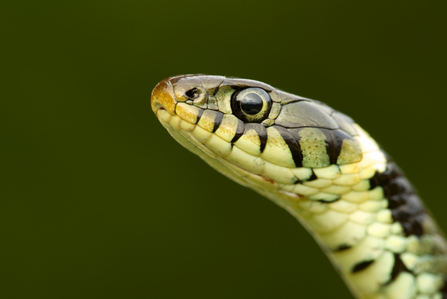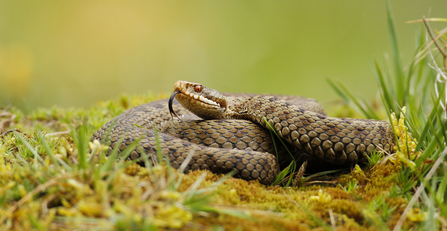Feared by many, even loathed by some, snakes have an undeserved reputation, and of all our wild animals they have suffered negative anthropomorphism more than most. They are often portrayed, even in modern Western culture, as malicious, untrustworthy, devious, even evil creatures. This has been continually reinforced over millennia by children’s stories, myths and religious prejudice.
Hostility to snakes goes way back as demonstrated in this depiction from 'history of St.Patrick'.





